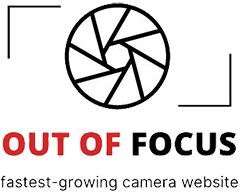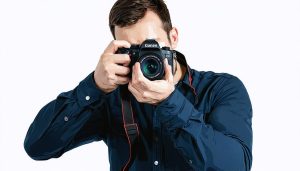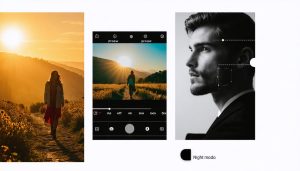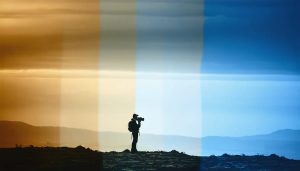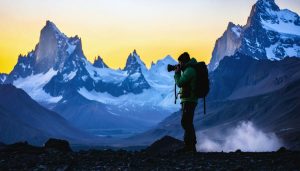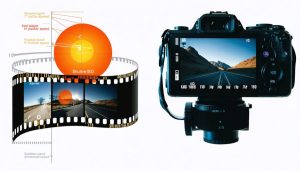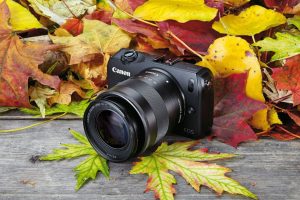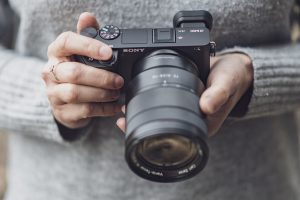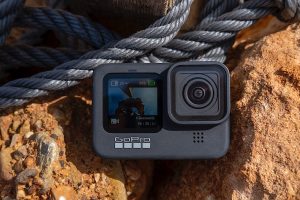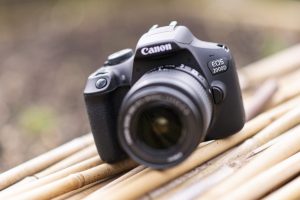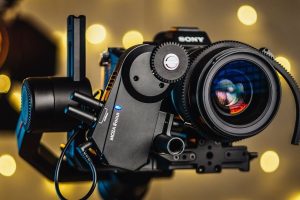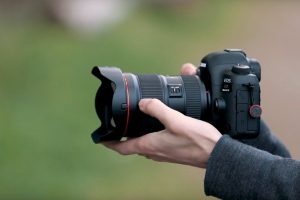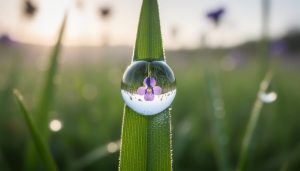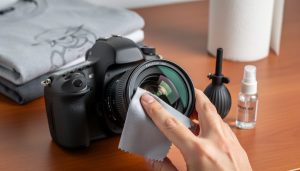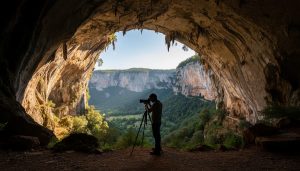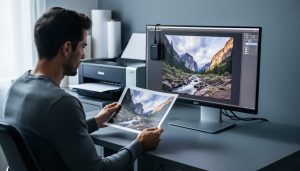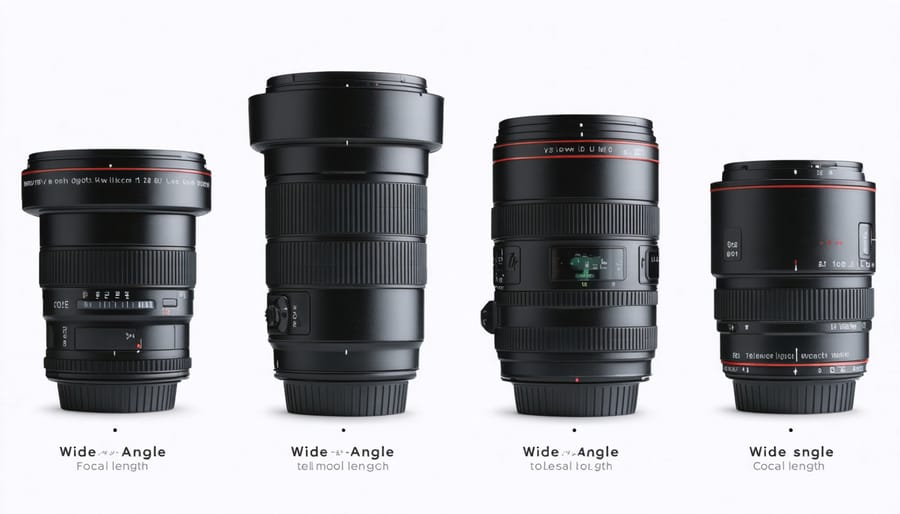
Master your photography by understanding the fundamental relationship between focal length and creative vision. A lens isn’t just glass and metal – it’s your key to translating the world into compelling images. Through camera lenses made simple, you’ll discover how each lens type shapes perspective, controls depth of field, and transforms ordinary scenes into extraordinary photographs.
Whether you’re capturing intimate portraits with creamy background blur using an 85mm prime, or stretching vast landscapes into frame with a wide-angle 16mm, your choice of lens dramatically impacts every aspect of your image. This guide demystifies focal lengths, apertures, and lens characteristics, empowering you to choose the perfect glass for your creative vision.
From the versatile 24-70mm workhorse to specialized macro lenses that reveal hidden worlds, we’ll explore how each lens type serves specific photographic purposes. Understanding these tools isn’t just about technical specifications – it’s about expanding your creative possibilities and developing your unique photographic style.
Understanding Focal Length: The Foundation of Lens Selection
What Does Focal Length Actually Mean?
Imagine holding up your thumb at arm’s length and then bringing it closer to your eye – that’s essentially what focal length does with your camera lens. In simple terms, focal length is the distance between your camera’s sensor and the point where light rays converge inside the lens, measured in millimeters. This measurement determines how much of a scene your camera can capture and how large subjects appear in your frame.
A shorter focal length, like 18mm, works like taking a step back – you’ll capture more of the scene, making it perfect for landscapes or group photos. On the flip side, a longer focal length, such as 200mm, is like zooming in with binoculars – it brings distant subjects closer and fills more of your frame with them, ideal for wildlife or sports photography.
Think of it this way: if you’re photographing a person from the same spot, an 85mm lens might perfectly frame their upper body, while a 24mm lens would show them as a smaller figure within a wider scene. The focal length you choose becomes a powerful tool for storytelling, helping you emphasize exactly what you want your viewers to see.
The Difference Between Prime and Zoom Lenses
When choosing best lenses for your camera, you’ll encounter two main categories: prime and zoom lenses. Prime lenses have a fixed focal length, meaning you can’t zoom in or out. While this might seem limiting, they typically offer superior image quality, wider maximum apertures, and are often more compact and lightweight. They also tend to be sharper and perform better in low-light conditions.
Zoom lenses, on the other hand, offer variable focal lengths, allowing you to adjust your composition without changing your position. This versatility makes them popular for events, travel photography, and situations where you need to quickly adapt to changing scenes. While they may not match the optical excellence of prime lenses at specific focal lengths, modern zoom lenses deliver impressive quality and convenience.
Choosing between prime and zoom lenses often comes down to your shooting style and needs. Many photographers keep both types in their kit, using primes for specific purposes like portraits or street photography, and zooms for versatile everyday shooting or when changing lenses isn’t practical.
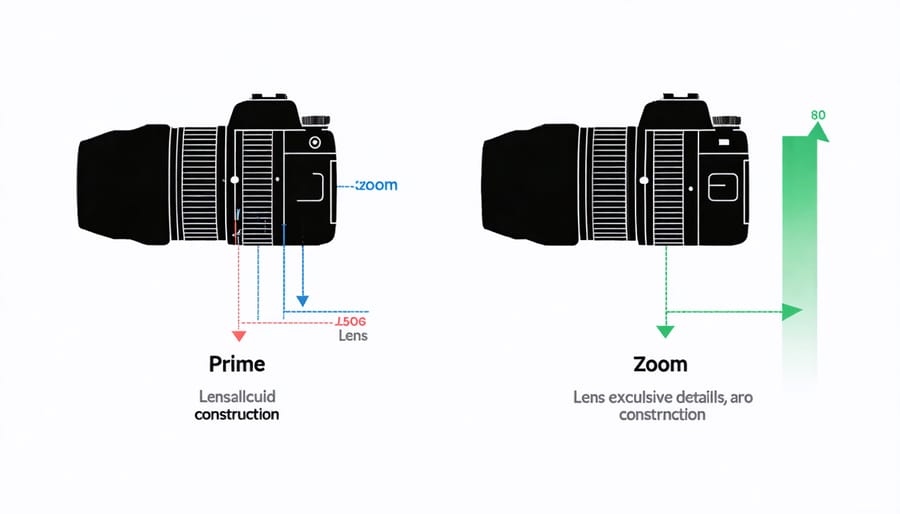
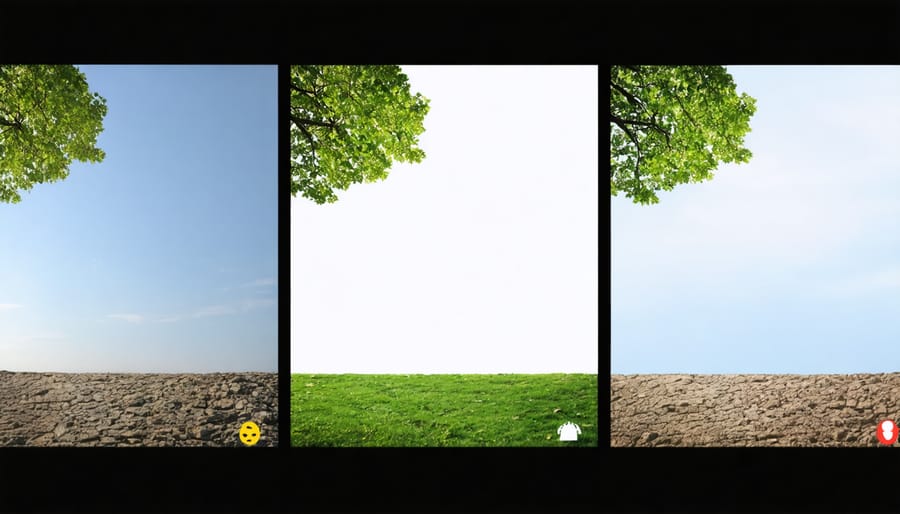
How Focal Length Changes Your Photos
Wide-Angle Effects (10-35mm)
Wide-angle lenses open up a whole new world of creative possibilities, capturing expansive scenes with dramatic perspectives. These lenses, ranging from 10mm to 35mm, excel at photographing vast landscapes, architectural marvels, and cramped interior spaces where backing up isn’t an option.
One of the most distinctive characteristics of wide-angle lenses is their ability to exaggerate perspective. Objects in the foreground appear larger and more prominent, while background elements seem to recede dramatically into the distance. This effect can create compelling compositions, especially when incorporating strong foreground elements like rocks in landscape photography or architectural details in urban scenes.
Real estate photographers particularly love wide-angle lenses for their ability to make rooms appear more spacious and capture entire interior spaces in a single frame. However, it’s important to note that these lenses can introduce distortion, particularly at the edges of the frame. While this can be used creatively, it’s something to watch for when photographing people, as it can lead to unflattering proportions when subjects are positioned near the frame’s edges.
For landscape photographers, wide-angle lenses are invaluable for capturing sweeping vistas and dramatic skies. They’re especially effective when shooting low to the ground, incorporating interesting foreground elements that lead the viewer’s eye into the scene. In urban photography, these lenses help capture tall buildings and narrow streets, though you’ll need to pay attention to keeping vertical lines straight unless the distortion is part of your creative vision.
Standard Focal Length (35-70mm)
Standard focal length lenses, typically ranging from 35mm to 70mm, are often called “normal” lenses because they capture images that most closely match human eye perspective. The 50mm focal length, in particular, has earned its reputation as the “nifty fifty” among photographers for providing a natural field of view that’s neither too wide nor too compressed.
These versatile lenses excel in everyday photography scenarios, from street photography to portraits. At 50mm, you’ll capture scenes with minimal distortion, making them ideal for documenting life as we see it. The subtle compression at this focal range also creates flattering portraits without the extreme effects seen in wide-angle or telephoto lenses.
One of the greatest advantages of standard focal length lenses is their typically large maximum apertures, often f/1.8 or even f/1.4, allowing for excellent low-light performance and beautiful background blur. This makes them perfect for environmental portraits, documentary photography, and indoor shooting without flash.
For travel photography, a 35-70mm lens might be the only lens you need. It’s wide enough to capture city scenes and architecture while offering enough reach for intimate street portraits. The natural perspective makes these focal lengths particularly suitable for photojournalism, where authentic representation is crucial.
These lenses also tend to be compact, lightweight, and affordable, making them excellent choices for photographers building their first kit or seasoned professionals seeking reliable everyday workhorses.
Telephoto Effects (70mm+)
Telephoto lenses, typically starting at 70mm and extending beyond 200mm, bring distant subjects dramatically closer and create unique visual effects that can transform your photography. These lenses compress perspective, making objects appear closer together than they actually are – a phenomenon photographers often use to create striking compositions.
One of the most appealing characteristics of telephoto lenses is their ability to isolate subjects against beautifully blurred backgrounds. This compression effect, combined with typically wider apertures, produces that coveted creamy bokeh that makes portraits pop and wildlife photographs stunning. The narrow angle of view helps eliminate distracting elements, allowing you to focus viewers’ attention precisely where you want it.
Sports and wildlife photographers particularly benefit from telephoto lenses, as they can capture detailed shots from a safe, non-intrusive distance. For wildlife photography, a 300mm lens is often considered a minimum, while sports photographers might opt for even longer focal lengths to catch action from across the field.
Telephoto lenses also excel in landscape photography, contrary to popular belief. They can isolate interesting patterns in distant mountains, compress layers of rolling hills, or capture dramatic shots of the moon appearing massive against city skylines. Portrait photographers often choose focal lengths between 85mm and 200mm to create flattering facial features and achieve excellent subject separation.
Remember that longer focal lengths amplify camera shake, so proper stabilization through image stabilization technology or a sturdy tripod becomes crucial for sharp images.
Choosing the Right Focal Length for Your Style
Portrait Photography
Portrait photography comes alive with the right lens choice, and focal length plays a crucial role in how your subjects appear in the final image. The most flattering focal lengths for portraits typically fall between 85mm and 200mm, with 85mm and 135mm being particularly popular among professionals.
A key reason for choosing longer focal lengths in portraiture is their ability to compress facial features, creating a more pleasing look while maintaining natural proportions. The 85mm focal length offers an ideal balance, allowing you to maintain comfortable working distances while delivering beautiful background blur (bokeh) that makes your subject pop.
Avoid using wide-angle lenses (35mm or wider) for close-up portraits, as they can distort facial features and create unflattering results. However, these wider focal lengths can work well for environmental portraits where you want to include more context and background elements.
For headshots, the 135mm focal length is often considered the gold standard, providing excellent compression and separation from the background. The 70-200mm zoom range gives you versatility in framing and composition while maintaining that coveted portrait-friendly perspective.
Remember that crop-sensor cameras will affect these focal lengths, effectively making them appear longer, so adjust your lens choice accordingly.
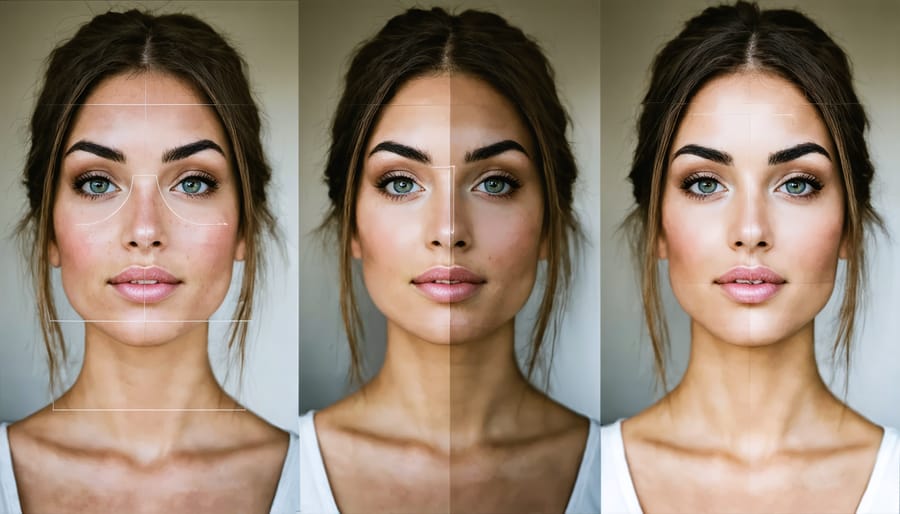
Landscape Photography
Landscape photography demands lenses that can capture the grandeur of sweeping vistas while maintaining sharpness throughout the frame. Wide-angle lenses, particularly those in the 14-35mm range, are the go-to choice for most landscape photographers, allowing you to include vast foregrounds and dramatic skies in a single composition.
For classic landscape shots, a 24mm focal length offers a natural perspective that closely matches human vision while still capturing an expansive view. This focal length is particularly effective when photographing mountains, seascapes, or rolling hills, as it maintains natural proportions while fitting plenty of scenery into the frame.
Don’t discount longer focal lengths, though. A 70-200mm lens can be invaluable for compressing distant elements and creating layered compositions, especially when photographing mountain ranges or abstract patterns in nature. These telephoto focal lengths also excel at isolating specific elements within a landscape, like a lone tree against a dramatic backdrop.
Ultra-wide lenses (14-16mm) can create spectacular results but require careful composition to avoid distortion. They’re particularly effective when incorporating interesting foreground elements or capturing dramatic architectural features within natural settings. For the most versatile landscape kit, consider carrying both a wide-angle zoom (14-35mm) and a medium telephoto (70-200mm).
Street Photography
Street photography demands lenses that let you capture candid moments without drawing attention to yourself. The sweet spot for street photography typically falls between 35mm and 50mm focal lengths, closely matching the human eye’s natural perspective. These lengths allow you to maintain a comfortable shooting distance while capturing both intimate portraits and wider environmental context.
A 35mm lens is particularly versatile for street work, offering a slightly wider view that helps incorporate more environmental elements into your shots. It’s perfect for capturing bustling street scenes, architecture, and groups of people while maintaining natural proportions. The 50mm, often called the “nifty fifty,” excels at isolating subjects from their surroundings and creating beautiful bokeh effects, especially useful in busy urban environments.
For those who prefer to keep more distance from their subjects, a 85mm lens can be an excellent choice. However, remember that longer focal lengths can make it challenging to work in cramped city streets or narrow alleyways. Some street photographers also favor wider lenses like 28mm, particularly when working in tight spaces or trying to capture the full atmosphere of a location.
The key is choosing a focal length that matches your shooting style and helps you remain inconspicuous while documenting urban life.
Event Photography
Event photography demands versatility, and choosing the right lens can make or break your coverage. A standard zoom lens in the 24-70mm range serves as an excellent workhorse, allowing you to capture both intimate moments and wider group shots without constantly changing lenses. This focal range lets you move seamlessly from candid portraits to environmental context shots.
For indoor events with challenging lighting, consider fast lenses with wide apertures (f/2.8 or wider) to maintain image quality without relying heavily on flash. A 70-200mm telephoto zoom proves invaluable for ceremonies, speeches, and performances, letting you maintain a respectful distance while getting close-up shots of key moments.
Don’t overlook the importance of a wide-angle lens (16-35mm) for venue shots, large group photos, and tight indoor spaces. This range helps capture the atmosphere and scale of the event, particularly useful for wedding venues and corporate gatherings.
Pro tip: Having two camera bodies, one fitted with a wide-to-normal zoom and another with a telephoto, allows for quick transitions between shooting styles without missing crucial moments. Remember that event photography often requires quick thinking and adaptability, so familiarize yourself with your chosen lenses before the big day.
Understanding photography lenses doesn’t have to be overwhelming. We’ve explored the fundamental aspects of camera lenses, from focal length and aperture to the various types available for different photography styles. Remember that your choice of lens dramatically influences your creative possibilities and can transform ordinary scenes into extraordinary images.
As you continue your photography journey, focus on mastering one lens type at a time. Start with a versatile prime lens or a standard zoom to build your essential photography skills before expanding your collection. Consider your primary shooting interests – whether that’s portraits, landscapes, or macro photography – and invest in lenses that align with those goals.
Don’t feel pressured to acquire every lens type immediately. Instead, rent or borrow different lenses to experiment and discover which ones truly enhance your creative vision. Pay attention to how each lens affects perspective, depth of field, and image quality in various shooting conditions.
Most importantly, remember that technical specifications are just part of the equation. The best lens is the one that helps you capture the images you envision. Practice regularly, experiment with different focal lengths, and let your creative instincts guide your lens choices. With time and experience, selecting the right lens for any situation will become second nature.
